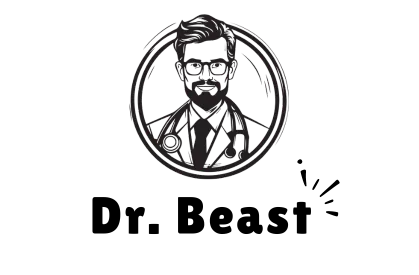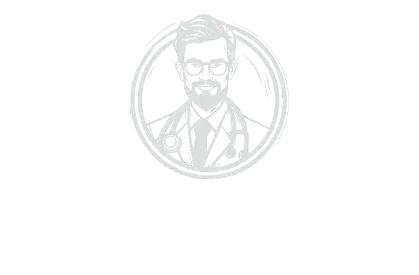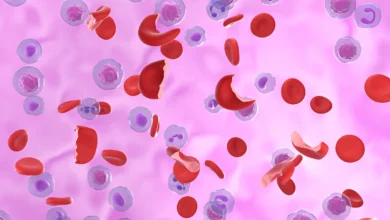The Monkeypox Enigma : An Emerging Infectious Threat!

Monkeypox has emerged as an infectious disease of significant concern due to its potential implications for global health. Initially identified in parts of Africa, it has gained international attention as cases have appeared beyond its traditional endemic boundaries. Although it shares similarities with smallpox, but it typically results in less severe illness. Nevertheless, the disease’s capacity to spread, coupled with its unique symptoms, necessitates a clear understanding among healthcare professionals and the general public alike. This comprehensive article delves into the various aspects of exploring its definition, variations, prevalence, causes, symptoms, complications, and management strategies. By providing detailed insights, this guide aims to prepare individuals to respond effectively to its outbreaks, minimizing confusion and misinformation.
Monkeypox extends beyond a simple viral infection, embodying a complex public health challenge with significant implications for global health security. This guide aims to unravel the complexities of monkeypox, offering strategies for navigating this emerging threat.
♦ Definition
Monkeypox is a zoonotic disease caused by the specific virus, a member of the Orthopoxvirus genus. The disease is characterized by a distinctive rash and systemic symptoms, including fever and swollen lymph nodes. While monkeypox shares some similarities with the more well-known smallpox, it generally presents with milder symptoms. Transmission primarily occurs from animals to humans, though human-to-human transmission can happen, particularly in close-contact settings. The virus can spread through respiratory droplets, direct contact with bodily fluids, lesion material, and contaminated objects.
Understanding the nature of the disease is crucial for identifying methods of transmission and implementing effective measures to control its spread.
♦ Types of Monkeypox
Monkeypox can be classified into two genetically distinct clades based on geographic distribution and genetic characteristics:
1. Central African (Congo Basin) Clade:
This form is associated with more severe symptoms and a higher rate of transmission. It is primarily found in the Democratic Republic of the Congo and surrounding regions.
2. West African Clade:
Generally linked with milder symptoms and lower transmission rates, this clade is found in West African countries such as Nigeria and Sierra Leone.
Recognizing these clades is essential for assessing risk and tailoring public health responses to outbreaks.
♦ Prevalence
Monkeypox was first identified in laboratory monkeys in 1958, with the first human case reported in 1970 in the Democratic Republic of the Congo. Historically, the disease has been confined to Central and West African regions, with sporadic outbreaks occurring primarily in rural areas where people come into contact with infected animals. However, recent years have seen cases appearing outside Africa, including in the United States and Europe, often linked to travel or imported animals.
- Endemic Regions: Central and West Africa remain the primary areas where monkeypox is endemic. The disease is more prevalent in regions with dense forests where humans have close contact with wildlife.
- Global Spread: Increased international travel and trade have occasionally spread the disease to non-endemic countries, underscoring the importance of global surveillance and rapid response to prevent widespread outbreaks.
Understanding monkeypox prevalence is crucial for developing targeted prevention and intervention strategies to mitigate its impact on public health.
♦ Causes & Triggers
Monkeypox is primarily an animal-borne disease, with rodents and primates serving as the main virus reservoirs. Human infection occurs through various pathways:
1. Animal-to-Human Transmission: The virus can spread to humans through direct contact with the blood, bodily fluids, or skin lesions of infected animals. Activities such as hunting, skinning, and preparing bushmeat are common exposure risks.
2. Human-to-Human Transmission: Although less common, monkeypox can spread between humans through respiratory droplets during prolonged face-to-face contact, direct contact with infected bodily fluids or lesions, and contaminated objects like bedding or clothing.
3. Environmental Factors: Deforestation and increased human encroachment into wildlife habitats can disrupt ecosystems, increasing the risk of zoonotic diseases like monkeypox spilling over into human populations.
Understanding these causes and triggers is essential for recognizing risk factors and implementing measures to prevent monkeypox transmission.
♦ Signs and Symptoms
The clinical presentation of monkeypox in humans resembles smallpox but is generally milder. Symptoms typically appear 5 to 21 days after exposure and can include:
1. Fever: A sudden onset of fever is often the first symptom, lasting several days.
2. Headache and Muscle Aches: Severe headaches and muscle pains are common, contributing to an overall feeling of malaise.
3. Lymphadenopathy: Swelling of the lymph nodes is a distinctive feature of monkeypox, differentiating it from smallpox.
4. Fatigue: Profound fatigue and exhaustion can accompany the other systemic symptoms.
5. Rash: A characteristic rash usually develops within a few days after fever onset, progressing from macules to papules, vesicles, pustules, and eventually scabs. The rash often begins on the face and spreads to other parts of the body.
Recognizing these signs and symptoms is crucial for early diagnosis and intervention, reducing the risk of complications and transmission.
♦ Complications
While monkeypox is generally self-limiting, it can lead to severe complications, particularly in vulnerable populations such as children, pregnant women, and immunocompromised individuals. Potential complications include:
1. Secondary Bacterial Infections: Skin lesions can become infected with bacteria, leading to cellulitis or abscesses.
2. Pneumonia: Respiratory involvement can occur, leading to pneumonia and respiratory distress.
3. Sepsis: In severe cases, systemic infection can lead to sepsis, a life-threatening condition requiring immediate medical attention.
4. Ocular Complications: The virus can affect the eyes, leading to conjunctivitis or corneal involvement, which may result in vision impairment.
5. Neurological Complications: Rarely, monkeypox can lead to neurological issues such as encephalitis or seizures.
Recognizing and addressing these complications promptly is vital for improving outcomes and reducing mortality rates associated with monkeypox.
♦ When to See a Doctor
Individuals should seek medical attention if they experience symptoms consistent with monkeypox, particularly if they have had recent contact with potentially infected animals or individuals or have traveled to an area where monkeypox is endemic. Key indicators include:
- Sudnen onset of fever and rash.
- Swollen lymph nodes.
- Respiratory symptoms or difficulty breathing.
- Persistent headache or muscle pain.
Early diagnosis and isolation are crucial to prevent the spread of monkeypox and to initiate appropriate care.
♦ Diagnosis
Diagnosing monkeypox involves a combination of clinical evaluation, epidemiological history, and laboratory testing. The diagnostic process may include:
1. Clinical Examination: Assessing the characteristic rash and systemic symptoms, along with a detailed patient history to identify potential exposure risks.
2. Laboratory Testing: Confirmatory diagnosis is achieved through polymerase chain reaction (PCR) testing of samples from skin lesions, which can detect the presence of the monkeypox virus DNA.
3. Serological Tests: In some cases, serological tests may be used to detect antibodies against the monkeypox virus, although these are less specific than PCR.
Accurate diagnosis is essential for guiding treatment decisions and implementing appropriate public health measures to control the spread of the virus.
♦ Treatment
There is no specific antiviral treatment for monkeypox, and management primarily focuses on supportive care to alleviate symptoms and prevent complications. Treatment approaches include:
1. Symptomatic Relief: Administering pain relievers and antipyretics to manage fever and discomfort.
2. Hydration and Nutrition: Ensuring adequate fluid intake and nutrition to support recovery.
3. Skin Care: Maintaining hygiene and using topical treatments to prevent secondary infections of skin lesions.
4. Antibiotics: If secondary bacterial infections occur, appropriate antibiotics may be prescribed.
5. Antiviral Medications: In severe cases or for high-risk individuals, antiviral drugs such as tecovirimat, initially developed for smallpox, may be considered under compassionate use or clinical trial settings.
Effective treatment requires a comprehensive approach, combining supportive care and monitoring to manage symptoms and prevent complications.
♦ Prevention
Preventing monkeypox involves reducing exposure to the virus and implementing measures to control outbreaks. Key prevention strategies include:
1. Avoiding Contact with Wildlife: Limiting exposure to potentially infected animals, especially in endemic regions, and avoiding the consumption of bushmeat.
2. Protective Measures for Healthcare Workers: Using personal protective equipment (PPE) and following infection control protocols to prevent transmission in healthcare settings.
3. Vaccination: The smallpox vaccine provides cross-protection against monkeypox and may be used in outbreak settings or for high-risk populations. Newer vaccines specifically targeting monkeypox are also being developed.
4. Public Health Surveillance: Enhancing surveillance and reporting systems to detect and respond to outbreaks quickly.
5. Public Education: Raising awareness about transmission and prevention measures in affected communities and beyond.
By implementing these prevention strategies, individuals and communities can reduce the risk of transmission and enhance overall public health readiness.





